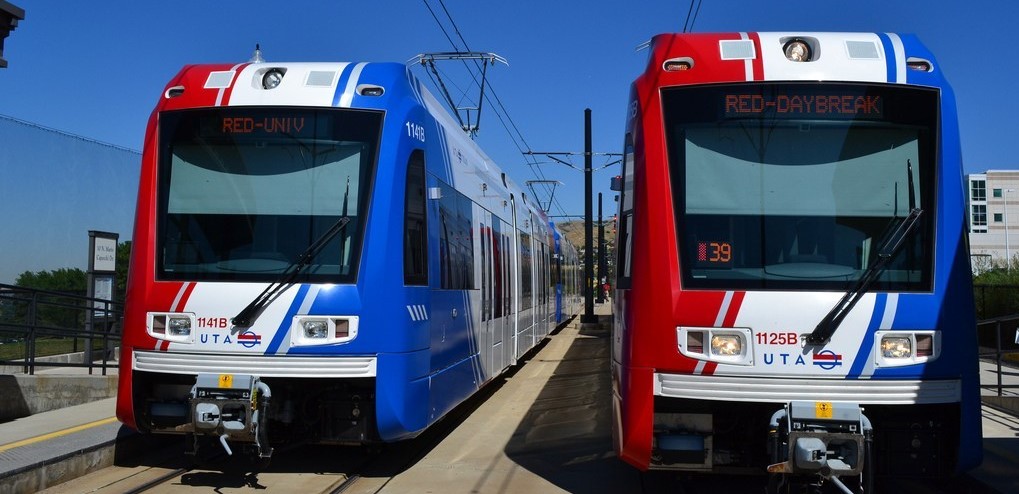Blog Post
Insight: Utah’s quality of life depends on transportation investment
By: Natalie Gochnour
First published in the Deseret News
I’ve been sharing a simple statistic to illustrate the magnitude of Utah’s recent population growth. If you combine natural increase (births minus deaths) and net in-migration over the last five years, Utah has added a population larger than the population of Weber County, Utah’s fourth largest county.
It begs the question: Can we preserve Utah’s life quality and continue to sustain high levels of population growth?
I argue we can, but it will require courageous leadership and bold investment that focuses on transportation. We have done it in the past with large investments like the I-15 rebuild in Salt Lake and Utah counties, Legacy Parkway, FrontRunner commuter rail, TRAX light rail, the Salt Lake City International Airport (ongoing) and other projects. Each generation of leadership must make 30-year investments to keep Utah thriving. For this reason, I wish to share four big transportation investments — some immediate and some long term — we need to make if we want to preserve our quality of life.
1) Extend light rail to the Adobe campus and Utah Valley University.
The drive from Draper to Pleasant Grove looks a bit like a war zone right now. Commercial real estate development to support Utah’s burgeoning tech industry leads the way, but so does the myriad transportation improvements being made. It’s causing inconvenience now, but it’s well worth the trouble. I think we should double down and find the funding to extend light rail transit from Draper to the Adobe campus and then on to Utah Valley University. The growth pressures in this region will continue to multiply. Waiting will only make the challenge worse.
2) Urban bike network.
I love Gov. Herbert’s campaign to build 1,000 new miles of family-friendly bike paths, lanes, and trails by 2027. The campaign includes on-street bike lanes, multi-use pathways, mountain bike trails, and neighborhood bicycle routes to places of work, schools, parks, churches and businesses. It’s a worthy goal that requires committed leaders and funding. Active transportation needs to be a big part of Utah’s future.
3) A lottery system or tolling in the Cottonwood Canyons.
Not all investment or change is easy. Our beloved Cottonwood Canyons are being loved to death. I grew up in the shadows of Big and Little Cottonwood Canyon. My senior year in high school I skied more than 50 days in the Wasatch. This past year I skied at a canyon resort once. A huge barrier is the unpredictable traffic and parking situation in both canyons. I support Salt Lake County Mayor Jenny Wilson’s calls for short-term solutions, as we simultaneously fund long-term investments through the Central Wasatch Commission. I think a lottery system on peak days and/or tolling may be necessary in the short term as we pursue transit solutions for the future.
The holy grail of transportation improvements is the connection between land use and transportation. By connecting the two we reduce transportation costs, improve air quality, and promote economic development by improving access to jobs and education. We need to help more Utahns get from home to work and school without ever having to start a car. I applaud the great work being done by Provo City on the Utah Valley Express Bus Rapid Transit, which connects Orem and Brigham Young University. I love what West Valley City has done with Fairbourne Station by creating a mixed-use development with great access to transportation. I admire Ogden’s downtown revitalization around their historic rail station and its plans to connect downtown to Weber State University with bus rapid transit.
Ideas like these require considerable study and research. Fortunately, Utah has well-trained and community-minded transportation professionals who have adopted Wasatch Choices 2050, a locally driven approach to create local transportation solutions with regional significance.
Preserving our quality of life won’t happen because of drift. It will happen because of mastery. Let’s elevate the conversation of how to invest in Utah’s transportation future.
Natalie Gochnour is an associate dean at the David Eccles School of Business and director of the Kem C. Gardner Policy Institute.






